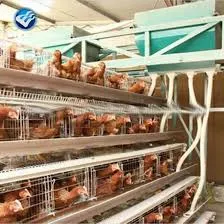feed mill hammer mill
11 月 . 19, 2024 14:44 Back to list
feed mill hammer mill
Feed Mill Hammer Mill A Vital Component in Animal Feed Production
In the world of animal husbandry, the quality of feed is paramount for the health and productivity of livestock. One crucial piece of machinery that plays a pivotal role in the production of high-quality animal feed is the hammer mill. Feed mill hammer mills are designed to efficiently grind raw material into a fine powder, making it suitable for various animal feed formulations. This article explores the importance, workings, and benefits of hammer mills in feed production.
What is a Hammer Mill?
A hammer mill is a type of crusher that can grind various materials into a fine powder by using hammers powered by a motor. In the context of a feed mill, the raw materials typically include grains, by-products, and other feed ingredients such as soybean meal, corn, wheat, and minerals. The hammer mill's design consists of a high-speed rotating rotor with hammers attached to it. When the raw materials enter the mill, the hammers swing at high speeds to shatter, cut, or crush the material into smaller particles.
How Hammer Mills Work
The operation of a hammer mill is relatively straightforward. Raw materials are fed into the mill's hopper, and gravity helps distribute them onto the grinding chamber. The rotating hammers impact the material, breaking it down into smaller pieces. The size of the final product can be adjusted by changing the screen size and the speed of the rotors. Once the material is pulverized to the desired consistency, it passes through a screen and is collected for further processing or direct use in animal feed.
Importance of Hammer Mills in Feed Production
The significance of hammer mills in feed production cannot be overstated. First and foremost, hammer mills improve the digestibility of feed ingredients. By breaking down raw materials into finer particles, animals can more easily absorb nutrients, leading to better growth rates and overall health. Additionally, a well-ground feed can help reduce feed waste, ensuring that livestock get the most out of their feed.
Furthermore, hammer mills are versatile machines that can handle various types of materials, making them ideal for producing custom animal feed blends. Farmers and feed mill operators can adjust the formulations based on the nutritional needs of different species, whether it be poultry, swine, or cattle. This flexibility enables the production of specialized feeds that can enhance productivity and efficiency in livestock operations.
feed mill hammer mill

Benefits of Using Hammer Mills
There are numerous benefits associated with using hammer mills in feed production. Some of these include
1. Efficiency Hammer mills can process large quantities of material quickly and effectively, making them essential for commercial feed mills that cater to vast livestock operations.
2. Cost-effectiveness By optimizing the particle size of feed ingredients, hammer mills contribute to better feed conversion ratios, which can ultimately decrease feeding costs for farmers.
3. Nutritional Value Fine grinding of feed ingredients enhances nutrient availability, ensuring that animals receive a balanced diet that promotes health and productivity.
4. Ease of Maintenance Modern hammer mills are designed for easy maintenance, reducing downtime and ensuring consistent operation.
5. Customization The ability to adjust the grind size and formulation allows feed producers to tailor their products to specific animal needs and market demands.
Conclusion
In conclusion, feed mill hammer mills serve as a cornerstone of efficient and effective animal feed production. Their ability to finely grind various raw materials improves feed digestibility and nutritional value, making them indispensable in modern agriculture. As the demand for high-quality animal feed continues to rise, hammer mills will remain a vital component in the quest for sustainable and productive livestock farming. Embracing advanced hammer mill technology can lead to better animal health, higher productivity, and ultimately, a thriving agricultural sector.
-
school
NewsJul.10,2025
-
Vacuum Packing Machine - Efficient & Reliable Vacuum Packaging Solutions for Food & Industrial Use
NewsJun.10,2025
-
High-Quality European Rabbit Cage Durable Welded Rabbit Cage Wire Mesh Supplier
NewsJun.10,2025
-
High-Efficiency Air Inlet Window for Optimal Poultry Ventilation & Cooling
NewsMay.30,2025
-
High-Efficiency Evaporative Cooling Pads Durable & Energy-Saving
NewsMay.30,2025
-
Automatic Egg Collecting Machine High-Efficiency Poultry Farm Solutions
NewsMay.29,2025






